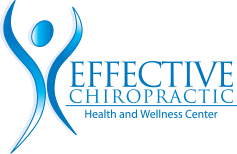Tendonitis Treatment in Lanham, MD
Lanham, MD Relies on Us for Tendonitis Treatment
What Is Tendonitis, and What Causes This Condition?
Your tendons are the thick cords that connect your bones to your muscles. If your tendons have become irritated or inflamed, you may have a condition called tendonitis (tendinitis). Tendonitis is usually caused by traumatic or repetitive injuries, poor posture, or overuse. Sometimes tendonitis is exacerbated by another chronic condition, such as rheumatoid arthritis, gout, or a thyroid disorder. In rare cases, a cat or dog bite infection eventually turns into tendonitis. Tendonitis affects tendons throughout your body, including those found in your knees, hips, shoulders, elbows, thumbs, wrists, and Achilles tendons. Many patients at Effective Chiropractic PG County seek treatment for their tendonitis in our Lanham, MD chiropractic clinic because it’s less invasive than the alternatives found at their doctor’s office.
Who Does Tendonitis Usually Affect the Most?
Tendonitis is common among athletes (especially golfers, skiers, bowlers, runners, swimmers, and tennis, basketball, and baseball players) and “weekend warriors” who typically exercise harder on the weekends than they do during the work week. Repetitive strains from physical activities often responsible for tendonitis include gardening, raking leaves, shoveling, carpentry, cleaning, scrubbing, and painting. To avoid tendonitis, it’s recommended that you gradually build up to your desired activity level and try to limit repetitive motions as much as possible. Because your tendons tend to lose their elasticity as you age, tendonitis is more common in adults over the age of 40 than in younger people, although this isn’t always the case. Taking the time to stretch properly before and after physical activities or using ergonomically-designed products in the workplace may help you avoid tendonitis.
Common Symptoms Associated with Tendonitis
Tendonitis is often called many other things, including tennis elbow, golfer’s elbow, pitcher’s shoulder, swimmer’s shoulder, or jumper’s knee. However, they all result in similar symptoms, which include:
- Intense pain or a dull ache around the affected area (could be sudden or gradual)
- Loss of motion (in your shoulders, hips, knees, etc.)
- Swelling, redness, warmth, or tenderness around the affected limb or joint
- Chronic discomfort or soreness around specific muscles
- Fever or general illness
Because tendonitis symptoms are often reminiscent of other severe medical conditions, it can sometimes be challenging to diagnose. Tendonitis symptoms will vary depending on the severity of your injury. Resting or icing the injured area is sometimes effective for minor injuries. However, if your pain doesn’t subside within the week, you should consult your doctor for diagnosis and more advanced tendonitis treatment. Tendonitis can take anywhere from a few days to a few weeks or months to go completely away, even with treatment. If ignored, tendonitis may turn into a more serious tendon rupture. The most common form of tendonitis that we provide treatment for at Effective Chiropractic PG County is rotator cuff injuries in the shoulder.
How Do Doctors Usually Diagnose and Treat Tendonitis?
If you suspect you may have tendonitis, schedule an appointment with the chiropractor. They will ask you questions about your medical history, including any previous injuries, and ask you to describe your pain. A physical exam will allow your doctor to inspect for signs of swelling, redness, muscle weakness, or restricted mobility. An x-ray, MRI (magnetic resonance imaging), ultrasound, or blood tests may be ordered to examine your joints and any present inflammation in greater detail.
How Our Chiropractors Treat Tendonitis in Lanham, MD
Applying a holistic approach to your healthcare, our chiropractors at Effective Chiropractic PG County will look for the causes of your tendonitis rather than merely treating your symptoms. The affected tendon may need to be loosened through electrical muscle stimulation or manual trigger point therapy. Ultrasound or massage therapy may also be necessary to break down scar tissue that could be impacting your range of motion. We also sometimes recommend using the Graston Technique as part of your customized treatment plan. While the amount of time and number of chiropractic treatments required will vary from patient to patient, we find that many patients notice less pain and inflammation around the tendon within the first three weeks. We may also recommend dietary and lifestyle changes to make you less prone to developing tendonitis.
Contact Effective Chiropractic PG County for a Consultation
If your tendonitis is chronic (lasting longer than six months), it may be more difficult to treat. Effective Chiropractic PG County welcomes questions concerning our tendonitis treatment in Lanham, MD. Don’t hesitate to reach out to us via phone or email to schedule a consultation at our clinic. We look forward to aiding you on the road to recovery!
